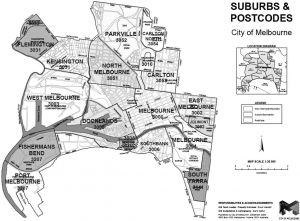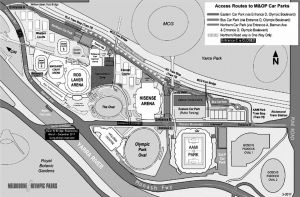摘要
后工业时代,信息通信技术蓬勃发展,全球性服务网络和全球性价值链快速形成,人力资本积累和新兴产业带动了经济持续增长。在此背景下,墨尔本城市劳动力结构的变化、高附加值产业的发展,推动了其城市经济可持续增长,提升了居民的生活质量,丰富了访客的旅游体验。本文研究了墨尔本中央商务区的服务产业、空间特征及政策,指出了产业发展、空间结构变迁及相关政策与服务业全球化存在内在逻辑关联,墨尔本的劳动力专业化和空间结构互动,对驱动服务型经济发展、促进产业升级、加速全球-本地经济互动发挥了巨大作用,墨尔本中央商务区完善的基础设施和有效的运营制度将其塑造为全球知名的知识服务型城市。
作者
吴昊 ,澳大利亚墨尔本大学建筑建造规划学院高级讲师、博士生导师;主要研究方向为城市土地开发管理、住宅及商用房地产经济、历史建筑管理、城市宜居性及相关产权及制度分析。
Wu Hao
- 习希德、吴昊、李翔:《墨尔本的城市宜居性》,《上海城市规划》2017年第136期。
- 徐子沛:《大数据:数据革命如何改变政府、商业与我们的生活》,中和文化出版社。
- Alcácer,J. and Chung,W. (2007). Location Strategies and Knowledge Spillovers. Management Science,53(5),760-776.
- Audretsch,D.B. and Feldman,M.P. (2004). Knowledge Spillovers and the Geography of Innovation. Ch.61,Handbook of Regional and Urban Economics,4,J Henderson and J Thisse eds.,2714-2739,Elsevier B.V.
- Beer,A.,Bentley,R.,Baker,E.,Mason,K.,Mallett,S. & Kavanagh,A. (2016). Neoliberalism,Economic Restructuring and Policy Change:Precarious Housing and Precarious Employment in Australia. Urban Studies,53(8),1542-1558.
- Berry,B.J.L. (1974). The Economics of Land-use Intensities in Melbourne,Australia. Geographical Review,64,479-497.
- BITRE. (2011).Population Growth,Jobs Growth and Commuting Flows in Melbourne. Research Report 125. Bureau of Infrastructure,Transport,and Regional Economics,Canberra.
- Buera,F.J. and Kaboski,J.P. (2012). The Rise of the Service Economy. American Economic Review,102(6),2540-2569.
- City of Melbourne. (2019). Council Plan 2017-2021. The City of Melbourne Council,Melbourne.
- City of Melbourne. (2014). A Knowledge City Strategy:Strengthening Melbourne’s Knowledge Sector through Collaboration 2014-18. The City of Melbourne Council. Melbourne.
- City of Melbourne. (2009). Transforming Australian Cities:for a More Financially Viable and Sustainable future. City of Melbourne and Victorian Department of Transport. Melbourne.
- Coffey,W.J.,& Shearmur,R.G.(2002).Agglomeration and Dispersion of High-order Service Employment in the Montreal Metropolitan Region,1981-1996. Urban Studies,39(3),359-378.
- Combes,P. and Gobillon,L. (2015). The Empirics of Agglomeration Economies. Ch.5,Handbook of Regional and Urban Economics,5A,J Henderson and J Thisse eds.,247-348,Elsevier B.V.
- Edgington,D.W. (1982a). Organisational and Technological Change and the Future Role of the Central Business District:An Australian Example. Urban Studies,19,281-292.
- Edgington,D.W. (1982b). Changing Patterns of Central Business District Office Activity in Melbourne. Australian Geographer,15(4),231-242.
- Fincher,R. and Shaw,K. (2009). The Unintended Segregation of Transnational Students in Central Melbourne. Environment and Planning A,41,1884-1902.
- Florida,R. (2012). The Rise of the Creative Class,Revisited. Basic Books,New York.
- Florida,R. (2006). The Flight of the Creative Class:the New Global Competition for Talent. Liberal Education,92(3),22-29.
- Florida,R. (2005). The Creative Spirit of Docklands,in:J. Keeney (Ed.) Waterfront Spectacular:Creating Melbourne Docklands:the People’s Waterfront. Roseville,NSW:ETNCOM.
- Friedmann,J. (1986). The World City Hypothesis. Development and Change,17(12),69-83.
- Friedmann,J. and Wolff,G. (1982). World City Formation:An Agenda for Research and Action. International Journal of Urban and Regional Research,6(3),309-344.
- Fujita,M. (2007). Towards the New Economic Geography in the Brain Power Society. Regional Science and Urban Economics,37,482-490.
- Gabe,T. & Abel,J.R. (2011). Agglomeration of Knowledge. Urban Studies,48(7),1353-1371.
- Henderson,J.V. (2007). Understanding Knowledge Spillovers. Regional Science and Urban Economics,37,497-508.
- Hipp,C. and Grupp,H. (2005). Innovation in the Service Sector:the Demand for Service-specific Innovation Measurement Concepts and Typologies. Research Policy,34,517-535.
- Hurley,K. (2015). The Melbourne Story:An Analysis of the City’s Economy Over the 2000s. Ph.D.Thesis,Victorian Institute of Strategic Economic Studies,Victoria University,Melbourne.
- Iammarino,S. and McCann,P. (2006). The Structure and Evolution of Industrial Clusters:Transactions,Technology and Knowledge Spillovers. Research Policy,35,1018-1036.
- Interplan. (1974). City of Melbourne Strategy Plan. City of Melbourne,Interplan Pty Ltd.,Melbourne.
- Korff,R. (1987). The World City Hypothesis:A Critique. Development and Change,18(3),483-493.
- Mees,P. (2000). A Very Public Solution:Transport in the Dispersed City. Melbourne University Press,Melbourne.
- MMBW. (1981). Metropolitan Strategy Implementation. Melbourne and Metropolitan Board of Works,Melbourne.
- Nethercote,M. (2019). Melbourne’s Vertical Expansion and the Political Economies of High-rise Residential Development. Urban Studies,56(16),3394-3414.
- Rosewall,T. and Shoory,M. (2017). Houses and Apartments in Australia. Reserve Bank of Australia Bulletin,June Quarter. Canberra.
- Sandercock,L. and Dovey,K. (2002). Pleasure,Politics,and the “Public Interest”:Melbourne’s Riverscape Revitalisation. Journal of the American Planning Association,68(2),151-164.
- Savills. (2019). Tech Cities in Motion:the Cities at the Forefront of Global Tech. Savills Research,1-9.
- Selvarajah,C. and Masli,E.K. (2011). Ethnic Entrepreneurial Business Cluster Development:Chinatowns in Melbourne. Journal of Asia Business Studies,5(1),42-60.
- Shaw,K. (2013). Docklands Dreamings:Illusions of Sustainability in the Melbourne Docks Redevelopment. Urban Studies,50(11),2158-2177.
- Sigler,T.,Searle,G.,Martinus,K. & Tonts,M. (2016). Metropolitan Land-use Patterns by Economic Function:A Spatial Analysis of Firm Headquarters and Branch Office Locations in Australian cities,Urban Geography,37(3),416-435.
- Sigler,T.J.,Searle,G. & Martinus,K. (2018). Industrial Location and Global Restructuring in Australian Cities. Australian Geographer,49(3),365-381.
- VSG. (2017). Plan Melbourne 2017-2050:Metropolitan Planning Strategy. https://planmelbourne.vic.gov.au/home. The State of Victoria Department of Environment,Land,Water and Planning.
- VSG. (2018). Investing in Victoria. The Victorian State Government,Melbourne. invest.vic.gov.au.
- Watkins,A. (2014). The Spatial Distribution of Economic Activity in Melbourne,1971-2006,Urban Geography,35(7),1041-1065.
- Watkins,A. (2009). The Dynamics of Urban Economies:Melbourne 1971 to 2006. Urban Studies,46(8),1553-1576.
- White,Michelle J. (1999). Urban Areas with Decentralized Employment:Theory and Empirical Work. In Cheshire & Mills (Eds.),Handbook of Regional and Urban Economics,(3,Applied Urban Economics). Amsterdam:North Holland.
- Woodcock,I.,Dovey,K.,Wollan,S. & Beyerle,A. (2010). Modelling the Compact City:Capacities and visions for Melbourne. Australian Planner,47(2),94-104.
- Wu,H. & Reed,R. (2007). Understanding Commercial District Development in Guangzhou:A Real Option Approach. Proceedings of European Real Estate Society Annual Conference,1-11,London.




